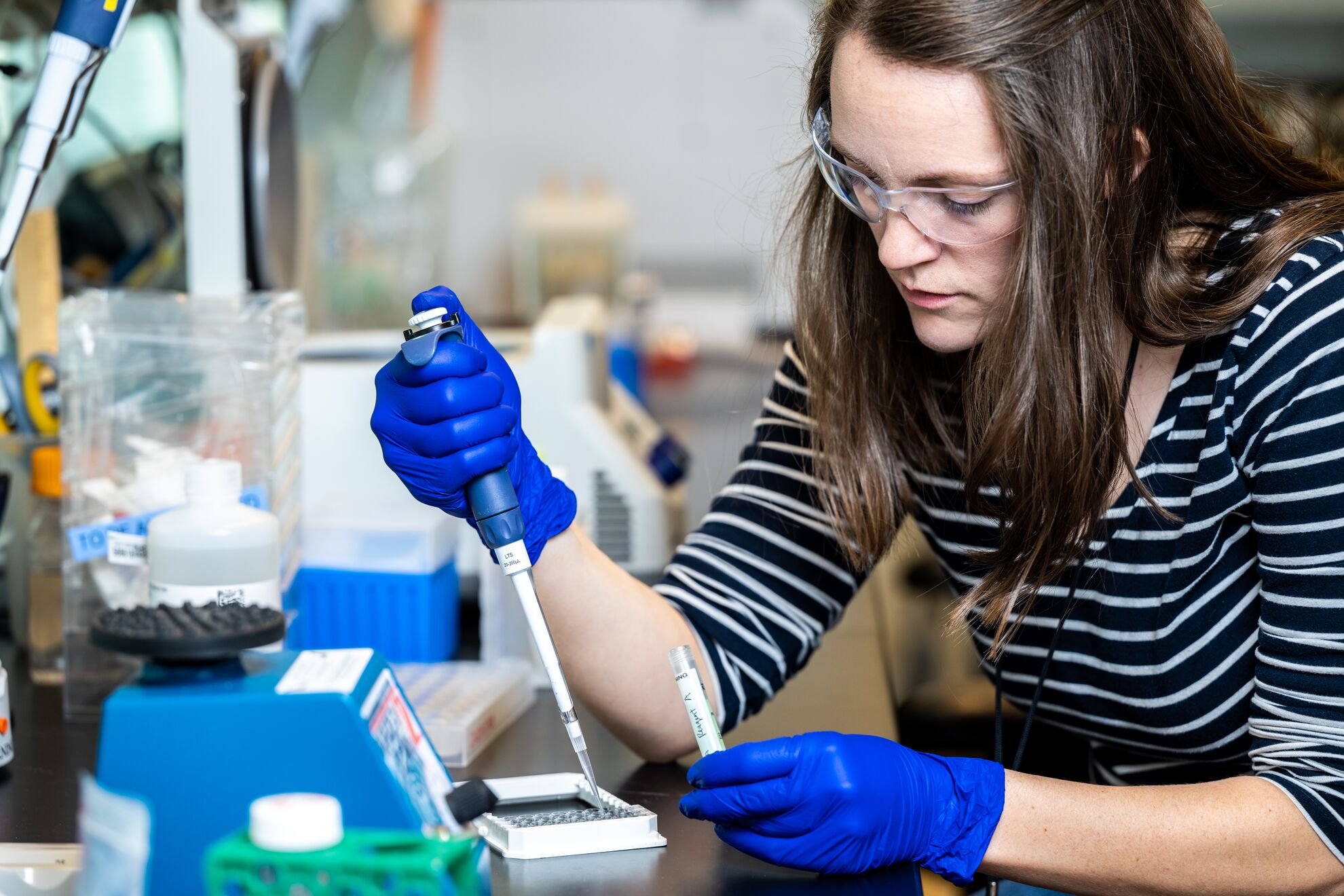Prepping for Success
A glimpse into the sometimes repetitive life of a sample prepper

A behind-the-scenes look at the sample prep masters.
(Photo by Andrea Starr | Pacific Northwest National Laboratory)
Behind the scenes of any great production are doers: people focusing on their craft, their piece of the puzzle. In science, some may call them the unsung heroes of studies.
Small teams in the Biological Sciences Division at Pacific Northwest National Laboratory and at EMSL—the Environmental and Molecular Sciences Laboratory, an Office of Science user facility at PNNL—are pros at preparation. They’re relied upon to receive, and maintain integrity of, a variety of samples and sample types. They clean, dilute, digest, and mix. They refrigerate, sieve, and repackage. Sometimes they pipette for hours. But they have a common goal: to churn out the best data possible.

“I’m most fulfilled when I’m making someone else’s job easier and helping them get good data,” said Josie Eder, a chemist on the Integrative Omics team. And though prep work can be repetitive, Eder says she “thrives on mastering something.”
Today, she’s a machine feeding another machine—a mass spectrometer (MS) at EMSL. She receives samples from the Biological Sciences Facility (BSF), finishes prep, then runs them on the MS.
“Knowing what to do with complex samples is the most difficult part of my job, she says.” Treating samples correctly and equally is paramount, but she thinks the problem-solving aspect is fun.
Chemist Chelsea Hutchinson says that sample prep has all the components she wants in a job: hands-on activity and cerebral challenges. The “tangible aspect,” as she calls it, is what she really likes about the job. “At the end of the day, it’s clear what I’ve accomplished.”
Hutchinson primarily preps samples in BSF, and hers are often human tissue samples, which adds some pressure.

“I often reflect on what the research means,” she explains. “The samples are precious and the results are critical, particularly when you’re processing something like a brain sample from an Alzheimer’s patient who passed a decade ago because you won’t get another chance at getting data from that sample if a mistake is made.”
Some sample preps are more elaborate than others. Often, Hutchinson said, it will take a month or more to prep a single sample because of the many manipulations required for various analyses.
Jennifer Kyle, Earth and Biological Sciences Directorate team leader for the Metabolomics team, says the prep team is responsible for all of the samples that pass through the mass spectrometry facility, which equates to hundreds of projects and thousands of samples per year. “Principal investigators and collaborators are completely reliant on their skills and attention to detail,” she added. “Because of this hard-working, dedicated, and meticulous group of individuals, we are able to advance science and make discoveries.”
One of the details that’s crucial to Jason Toyoda’s work is making sure soil samples are as clean as possible before going into a MS. Toyoda is an Earth scientist at EMSL.

“I don’t want to crash or clog an instrument,” said Toyoda. “So getting samples clean enough to run in a MS is really important.”
Toyoda explains that there are nuances in preparing soils. Some have lots of minerals to clean up, others are peat-heavy. He’s prepared and run enough samples now to know which soils will run best on certain instruments, and he advises others as part of the soil automation team at EMSL. He and the team are trying to automate prep of soil cores they receive through the Molecular Observation Network, or MoNET.
When asked about working behind the scenes, Toyoda says he prefers to keep a low profile. “As long as the work is done well, people appreciate it.”
Published: June 30, 2023